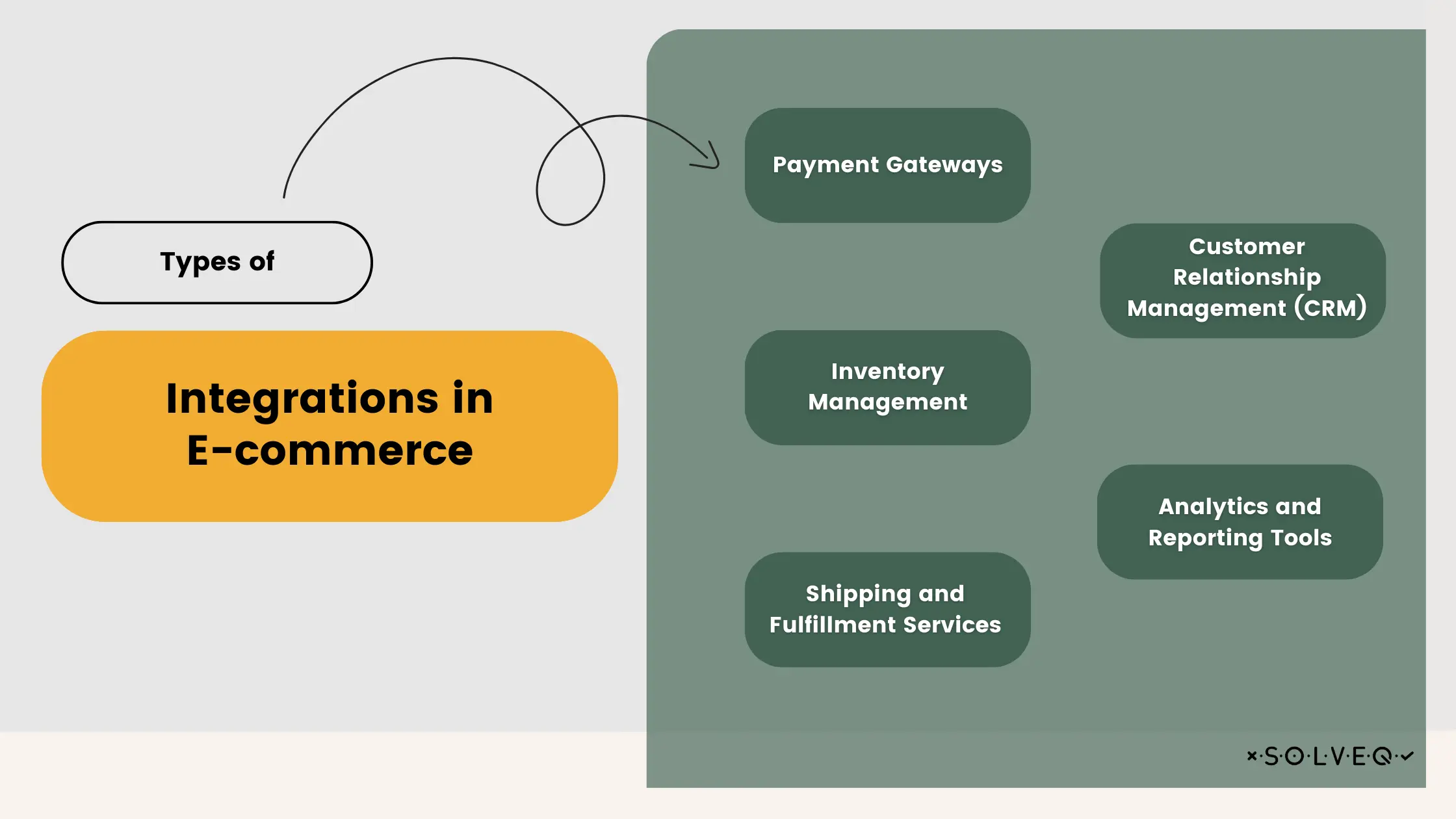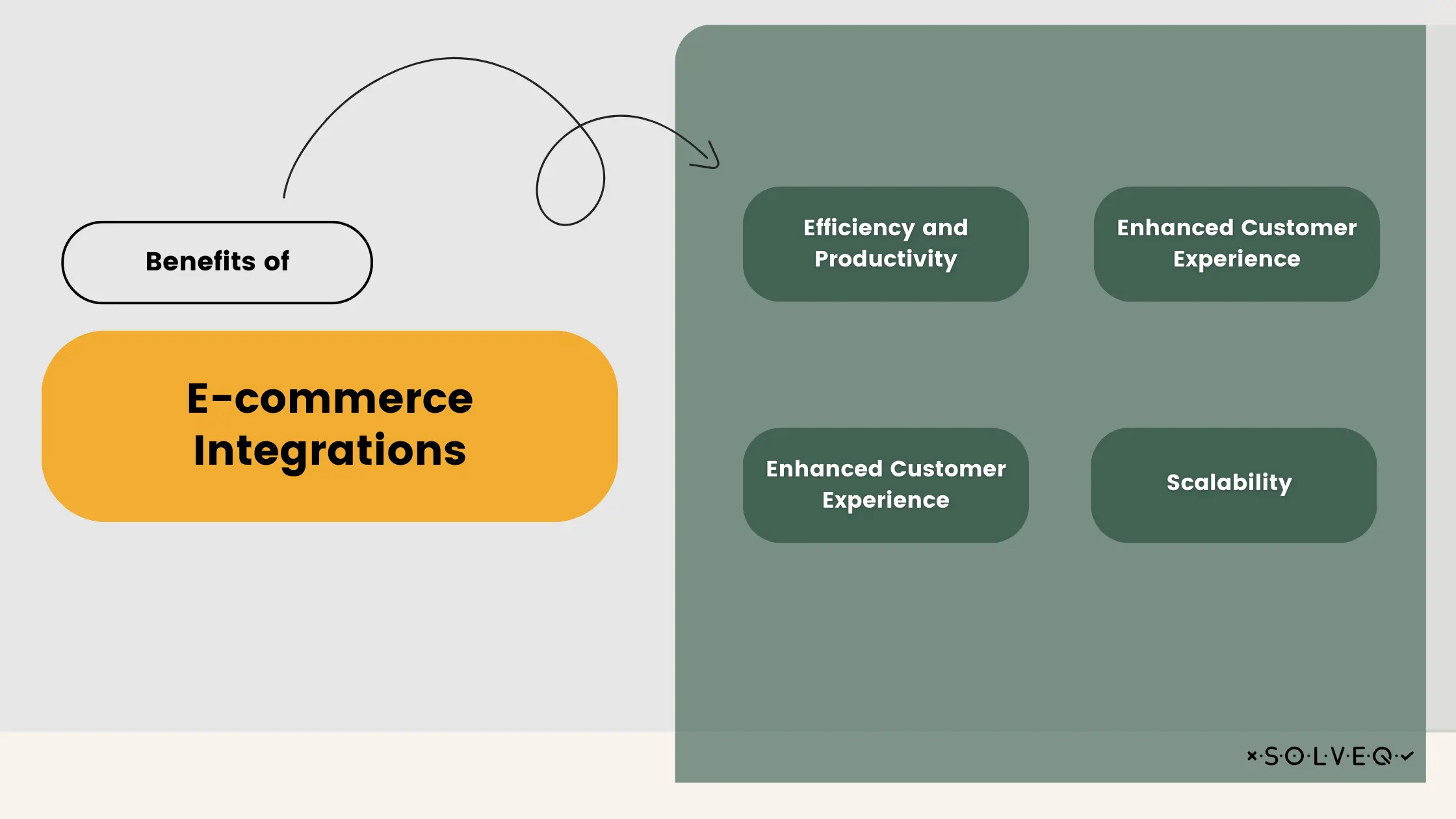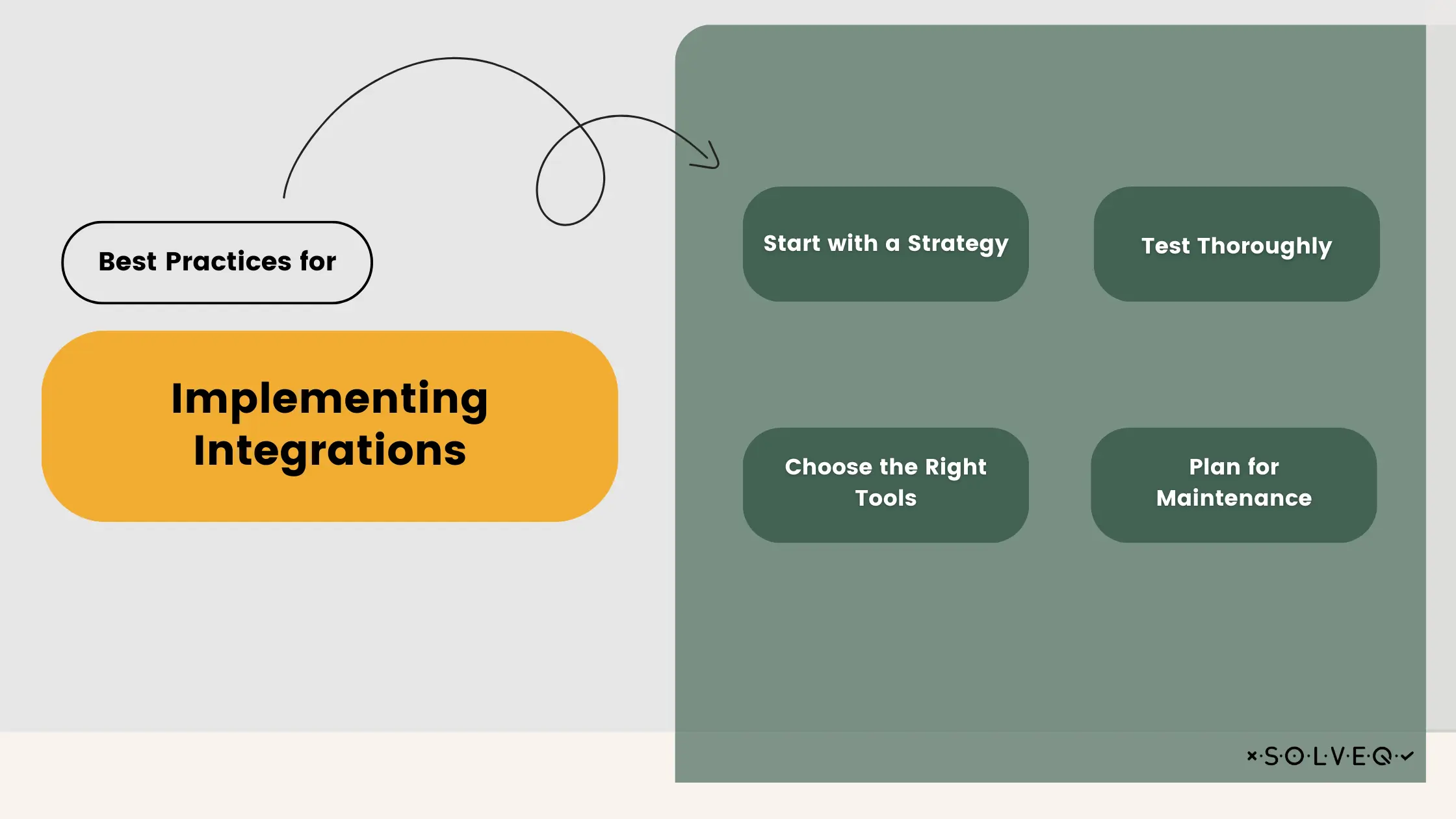A Step-by-Step Guide to eCommerce Integrations for 2024
12 Mar 2024 • 10 min read

Marcin Kulawik

In today's rapidly evolving digital landscape, e-commerce has become an indispensable part of the global market. As businesses continually strive to meet the growing demands of tech-savvy consumers, the importance of e-commerce platforms in driving sales and building customer relationships cannot be overstated. Central to this digital commerce revolution are integrations, which serve as the backbone for enhancing these platforms. Integrations not only streamline various operational processes but also significantly enhance the customer experience. This article delves into the vital role of integrations in modern e-commerce, exploring their types, benefits, and best practices for implementation.
The Role of Integrations in E-commerce
In the dynamic world of eCommerce, the role of integrations cannot be overstated. Integrations, fundamentally, involve the connection of disparate software systems, enabling them to communicate and operate collectively. This integration is crucial for several reasons:
- Streamlining Operations: By allowing different applications to share data and functions seamlessly, integrations automate processes that would otherwise require manual effort, leading to increased efficiency and reduced errors.
- Enhancing Customer Experience: Integrations contribute to a more cohesive and personalized shopping journey. From improved website functionality to personalized marketing, they play a pivotal role in making the customer experience smoother and more engaging.
- Driving Sales: Through insights gained from integrated analytics tools, businesses can make data-driven decisions that boost sales. These integrations help in understanding customer behavior, managing inventory more effectively, and creating targeted marketing campaigns.
As we delve into 2024, the ability to effectively leverage these integrations will be a defining factor for eCommerce businesses aiming to stay ahead in an increasingly digital marketplace.
Types of Integrations in E-commerce
E-commerce integrations come in various forms, each serving a specific function that contributes to the seamless operation and growth of an online business. Key types of integrations include:

- Payment Gateways: Secure processing of payments is critical, and integrations with platforms like PayPal, Stripe, and Square ensure that transactions are handled safely and efficiently. This not only builds customer trust but also streamlines the checkout process.
- Inventory Management: Integrations with inventory management systems enable real-time tracking of stock levels. Additionally, connecting with suppliers for automated restocking ensures that inventory is always aligned with demand, reducing the risk of stockouts or overstocking.
- Shipping and Fulfillment Services: By integrating with shipping providers such as FedEx, UPS, and DHL, eCommerce platforms can automate order fulfillment, generate shipping labels, and provide real-time tracking to customers. This improves the delivery experience and efficiency.
- Customer Relationship Management (CRM): Integrating with CRM systems like Salesforce and HubSpot enhances the management of customer data. This allows for more personalized marketing efforts and improved customer service, fostering stronger customer relationships.
- Analytics and Reporting Tools: The integration of analytics tools, such as Google Analytics, is essential for tracking user behavior and sales performance. These insights help businesses understand their customers better and make informed decisions to optimize their strategies.
Each of these integrations plays a pivotal role in building a robust and efficient eCommerce ecosystem, enabling businesses to manage their operations more effectively and provide a superior customer experience.
Benefits of E-commerce Integrations
E-commerce integrations offer a multitude of benefits, streamlining operations and enhancing the customer experience. These advantages include:

- Efficiency and Productivity: One of the most significant benefits of integration is the automation of routine tasks. This not only saves valuable time but also reduces the possibility of human error. Processes like order processing, inventory updates, and customer notifications become more efficient, allowing staff to focus on more strategic activities.
- Enhanced Customer Experience: From browsing products to final shipping, integrations create a smoother journey for customers. Integrated systems ensure that the customer receives consistent information, faster responses, and a more personalized shopping experience, leading to increased satisfaction and loyalty.
- Data Insights: By centralizing data from various sources, businesses gain comprehensive insights into their operations. This aggregated data is crucial for informed decision-making, helping businesses to understand customer preferences, forecast trends, and optimize their offerings.
- Scalability: As businesses grow, their systems and processes must evolve. Integrations facilitate scalability, allowing various systems to communicate seamlessly. This makes it easier to add new functionalities or scale up operations without disrupting existing workflows.
However, integrating different e-commerce systems also presents challenges and considerations:
- Compatibility: Ensuring compatibility between different software systems is vital. Businesses must assess whether their existing infrastructure can support new integrations and whether these integrations will work harmoniously with their current setup.
- Security: Integrations must be implemented with a strong focus on security. As they often involve the exchange of sensitive customer and business data, it's crucial to maintain high security standards to prevent data breaches and maintain customer trust.
In conclusion, while e-commerce integrations bring significant advantages in terms of efficiency, customer experience, data insight, and scalability, careful consideration must be given to compatibility and security to ensure a successful integration strategy.
Best Practices for Implementing Integrations
Implementing integrations in eCommerce requires a strategic approach to ensure effectiveness and alignment with business objectives. Key best practices include:

- Start with a Strategy: Before diving into integrations, it’s crucial to have a clear understanding of the goals and expected outcomes. This involves identifying the specific processes that need improvement, the type of data to be shared between systems, and the overall impact on the customer experience and business efficiency. A well-defined strategy will guide the selection of the right integrations and ensure they align with the business's long-term vision.
- Choose the Right Tools: The eCommerce landscape is replete with numerous tools and platforms, each offering unique features and benefits. Selecting the right ones involves a careful assessment of your current and future business needs, budget constraints, and compatibility with existing systems. Consider tools that not only address immediate requirements but also offer scalability to accommodate future growth.
- Test Thoroughly: Before rolling out integrations on a full scale, they should undergo rigorous testing. This step is crucial to identify and address any potential issues that could disrupt business operations or negatively impact the customer experience. Testing should encompass various scenarios and user behaviors to ensure robust performance under diverse conditions.
- Plan for Maintenance: The digital landscape is constantly evolving, making regular updates and maintenance of integrated systems vital. This ensures that integrations remain effective, secure, and in line with current technological standards. Planning for ongoing maintenance involves scheduling regular check-ups, being prepared for software updates, and having support systems in place to address any issues promptly.

By adhering to these best practices, eCommerce businesses can implement integrations that not only streamline operations but also contribute significantly to achieving their overall business goals.
Summary
This article has underscored the vital importance of integrations in modern e-commerce, a key component in today's digital marketplace. We explored various essential integrations, such as payment gateways, inventory management, and CRM systems, highlighting their roles in enhancing efficiency and customer experience. Challenges like compatibility and security, along with best practices for implementation, were also discussed. Remember, effectively integrating these tools can significantly transform your e-commerce operations. Consider how to adapt these integrations to your business's unique needs and take the first step towards a more streamlined and successful e-commerce strategy. Contact SolveQ and start your future now!
Share:
Looking for expert development team?
Schedule a call with Tech Consultant

Marcin Kulawik
Founder and CEO of SolveQ. Huge fan of building things with purpose, agility, and having fun while changing the World. Loves his family, teammates, and nature.